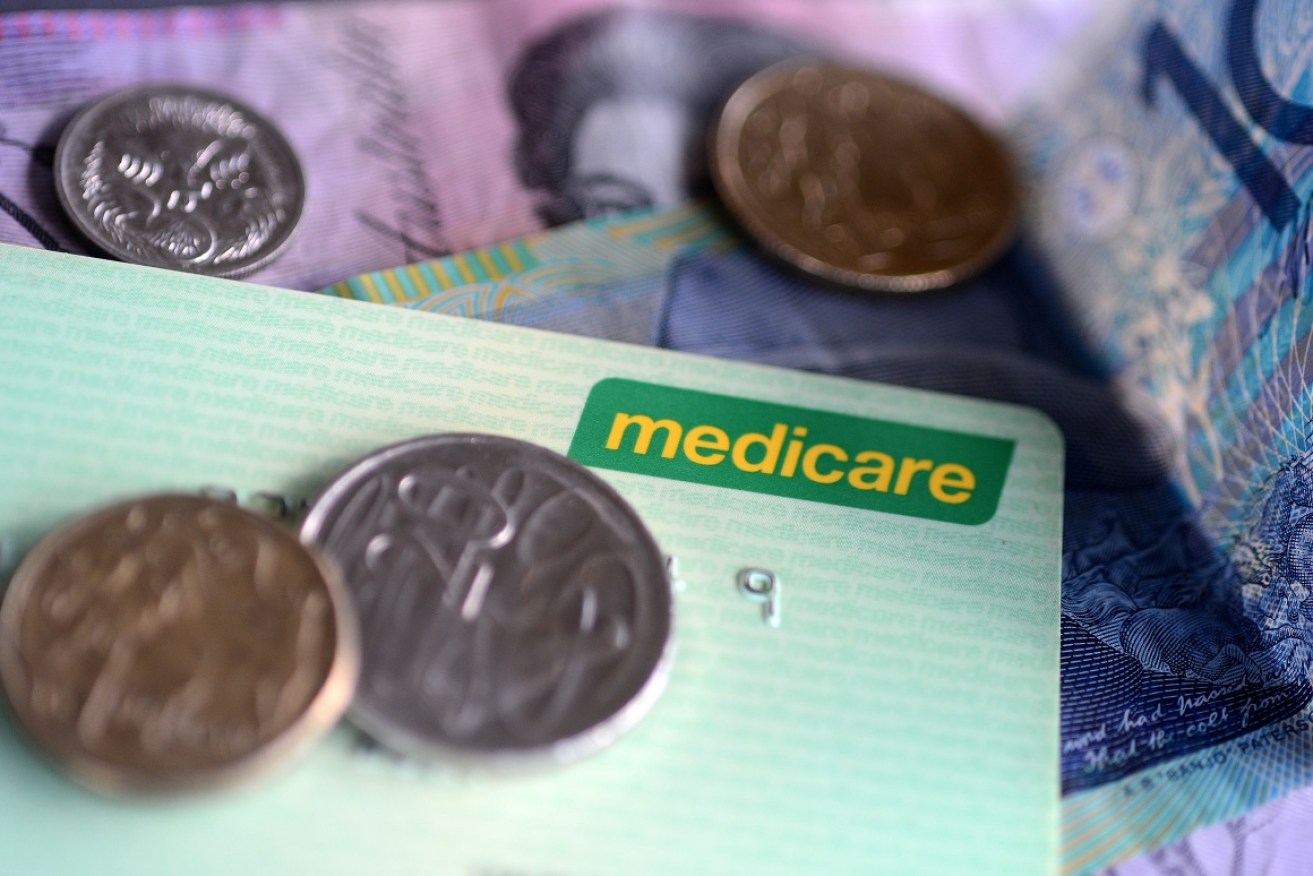Why we are spending billions a year topping up Medicare


Australians are being reminded to update their bank details to receive their medicare rebate. Photo: AAP
Half of Australians are spending a total of $3 billion a year topping up GP fees and other non-hospital costs that are not fully covered by Medicare, a new government report has found.
The report, by the Australian Institute of Health and Welfare, found 50 per cent of Australians – or 10.9 million people – were incurring “out-of-pocket” expenses when they visited a doctor.
During the year in question, 2016-17, patients on average paid $142 a year topping up Medicare services, but in some areas the average was double that.
These Medicare services were not just GP fees. They also included specialist, diagnostic imaging and pathology services.
When these services were taken into account, the AIHW said out-of-pocket expenses were much higher than when only GP visits were considered.
Last year, 86 per cent of GP services were bulk billed, and 66 per cent of patients had all of their GP services bulk billed.
Include other non-hospital services, and only 50 per cent of patients had all of their fees covered in full by Medicare.
The report also found that patients in inner city and wealthier parts of the country were on average paying much more in out-of-pocket expenses.
For example, 64 per cent of patients in the ACT paid an out-of-pocket expense, while only 10 per cent of patients in Western Sydney paid an out-of-pocket expense.
Bulk billing versus non-bulk billed
Currently the federal government, through Medicare, pays $37.60 towards GP visits.
If you go to a bulk billing clinic, then that is all the doctor gets out of you.
However, if you go to a non-bulk billing clinic, then the GP is at liberty to charge whatever he or she wants. It’s up to you to claim back the $37.60.
Dr Tony Bartone, president of the Australian Medical Association, told The New Daily the Medicare rebate of $37.60 was insufficient, with the market rate around double that.
“The Medicare rebate is completely unrealistic and out of touch with the cost of the provision of quality healthcare,” he said.

AMA president Tony Bartone says the Medicare rebate is too low. Photo: AAP
He said since Medicare was launched in 1984, the rebate had dramatically fallen out of sync with wages and inflation, a problem exacerbated by the recent four-year freeze in the Medicare rebate.
As a result, Dr Bartone said GPs who did not bulk bill were forced to charge more and more in out-of-pocket expenses to cover rising costs of doing business, such as rent, bills and wages.
As for clinics that only bulk billed, he denied this necessarily meant standard of service was dropping.
“They’re obviously funding the shortfall by other means,” he said.
“It could be anything from running an overdraft to taking a reduced amount for their services.
“It is putting pressure on GPs. We know practices are doing it tougher than ever.”
In May the federal government announced it was lifting the Medicare rebate for the first time in four years, by 55 cents – a rise that the New South Wales branch of the AMA called a “slap in the face”.
The cost of health services
While $3 billion may sound like a lot, it was a small fraction of total spending on health.
In 2016-17 the federal government spent $19 billion on non-hospital Medicare services, meaning patients contributed around 14 per cent of the total cost out of their own pockets.
That did not include non-hospital healthcare paid for through health insurance or 100 per cent out of pocket.
The $3 billion was also a fraction of the total amount Australians spend on healthcare.
According to the report, we are spending a total of $29.4 billion out of our own pockets on healthcare, not including health insurance premiums.
The biggest portion of that – $10.8 billion – goes to medicine. We spend $5.7 billion on dental care, $3.3 billion on hospital services, and $2.8 billion on aids and appliances, such as glasses, wheelchairs and hearing aids.








